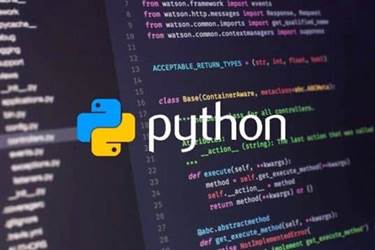It is frequently referred to as the fishbone diagram or the Ishikawa diagram due to how it appears and because Kaoru Ishikawa invented it. Cause and Effect A graph is used in a graphing-based method to illustrate the outcomes of several input situation mixtures. To obtain the take a look at instances, the graph is then reworked into a decision desk. Cause-effect graphing is used since boundary value evaluation and equivalence class partitioning methods don’t account for the mixture of input circumstances. But cause-effect graphing is utilized since it might be necessary to examine some essential behavior when certain combos of input circumstances are taken into consideration.
It focuses on identifying and testing the cause-effect relationships between different inputs and outputs of a system. The inputs are represented as causes, and the outputs are represented as effects. By analyzing these relationships, testers can derive a concise and efficient set of check instances to validate the software’s behavior. Cause Effect Graphing based method is a method by which a graph is used to characterize the situations of combinations of input situations. The graph is then transformed to a call table to obtain the take a look at circumstances.

In black-box testing, testers are involved with the inputs and corresponding outputs of a system solely. Record the precise outputs and examine them with the expected outputs. By utilizing Cause-Effect Graph, testers can reduce redundancy in test circumstances. The method helps in eliminating repetitive check circumstances by specializing in the unique mixtures of causes and results. The cause-effect graph was created by Kaoru Ishikawa and thus, is called the Ishikawa diagram. It is also called the ‘fish-bone’ diagram due to the way it is structured.
Check Case Development
Start by understanding the system under check and figuring out its inputs and outputs. Inputs may be person actions, exterior stimuli, or data values, while outputs characterize the system’s responses, outcomes, or adjustments. Cause-Effect Graph allows testers to establish potential defects and bugs early within the growth cycle. By analyzing the cause-effect relationships, testers can pinpoint situations the place particular inputs end in undesired outputs.
Cause-Effect Graph can turn into advanced and difficult to implement in large-scale systems with quite a few inputs and outputs. As the system’s complexity will increase, the cause-effect relationships may turn into more intricate, making it difficult to construct an accurate and manageable graph. This may end up in increased time and effort required to derive check instances successfully. In different words, for the existence of impact E2 the character in column 1 shouldn’t be both A or B. We can see within the graph, C1 OR C2 is linked via NOT logic with effect E2.

The effectiveness of Cause-Effect Graph heavily depends on a thorough understanding of the system being examined. Testers must have a transparent understanding of the system’s specifications, necessities, and behavior to accurately determine the cause-effect relationships. Lack of sufficient knowledge about the system can result in incomplete or incorrect cause-effect graphs and, consequently, insufficient check protection. Convert the graph into restricted entry determination desk by tracing state situations in the graph. Limited entry decision table is a type of decision table where there are solely two possible values for conditions which is nothing but Boolean worth.
Forms Of Testing
The primary advantage of cause-effect graph testing is, it reduces the time of test execution and price. In the following article, I am going to debate State Transition Testing. Here, on this article, I try to explain Cause Effect Graph Testing in SDLC. If each the causes C1 and C2 are true then the impact E1 might be true or else the effect E1 will be false.

Now the “fishbone” structure is not the one one that can be used for cause-effect graph creation. We will focus on the constraints intimately in the subsequent weblog to understand better. Specify the constraints on the graph describing the mixtures of cause and/or results that are unimaginable.
Cause-effect Graph Testing In Sdlc
The very first step is to determine the cause and results from the specifications and assign unique numbers to each of them. A cause-effect graph reveals the relationship between an end result (effect) and the elements (causes) that result in it. Exclusive constraint (or E-constraint) exists between c1 and c2 causes as a outcome of at one level of time, only one of them can be 1 i.e., they can’t https://www.globalcloudteam.com/glossary/cause-effect-graph/ be 1 simultaneously. The graph shown above is the ultimate cause-effect graph obtained for the given downside. As the system evolves over time, the cause-effect relationships might change, requiring updates to the cause-effect graph and corresponding test circumstances. Maintaining the graph and check cases can become challenging, particularly in dynamic and agile development environments.

Remember that you must choose the type of check documentation to be used primarily based on the precise of your project. But I recommend https://www.globalcloudteam.com/ you to maneuver to the most important and interesting level – let’s create a cause-effect graph for example.
For logic AND C3 (Character in column 2 ought to be a digit), C3 must be true. In other words, for the existence of impact E1 (Update made) any one from C1 and C2 but the C3 must be true. We can see in graph cause C1 and C2 are connected through OR logic and impact E1 is linked with AND logic. A tester must translate causes and results into logical propositions earlier than making a cause-and-effect diagram. Functions are deemed defect-free if they provide output (effect) in accordance with enter (cause); otherwise, they’re forwarded to the development group for rectification.
Cause-effect graphing method is used as a result of boundary worth evaluation and equivalence class partitioning methods don’t think about the mixtures of input situations. But since there could additionally be some critical behaviour to be tested when some combinations of enter conditions are thought of, that’s the reason cause-effect graphing method is used. The dynamic take a look at circumstances are used when code works dynamically primarily based on consumer enter. For example, while using e-mail account, on entering legitimate email, the system accepts it but, when you enter invalid e mail, it throws an error message. In this system, the input conditions are assigned with causes and the end result of these input conditions with results. Despite these potential drawbacks, Cause-Effect Graph stays a valuable black field testing method.
Cause-effect Graph Check Technique
Break into tech with the logic & computer science expertise you’d study in a bootcamp or university — at a fraction of the price. Educative’s hand-on curriculum is ideal for model new learners hoping to launch a profession. Tutorials Point is a leading Ed Tech firm striving to offer one of the best studying materials on technical and non-technical subjects.

This determination desk shall be used to derive the ultimate check cases. Cause Effect Graph is a black field testing technique that graphically illustrates the connection between a given end result and all of the elements that influence the result. A tester needs to convert causes and results into logical statements and then design cause-effect graph. Cause-Effect graph approach is predicated on a collection of requirements and used to find out minimal attainable check instances which can cowl a most test space of the software. Cause-effect graph comes under the black field testing method which underlines the connection between a given end result and all the components affecting the end result. The effectiveness of Cause-Effect Graph is influenced by the standard and variety of the test knowledge used.
Effect E3 – Displays Massage Y- The logic for the existence of effect E3 is “NOT C3” that means cause C3 (Character in column 2 is a digit) must be false. In different words, for the existence of impact E3, the character in column 2 shouldn’t be a digit. We can see within the graph, C3 is related through NOT logic with impact E3. Cause-Effect Graph primarily focuses on functional testing, emphasizing the cause-effect relationships between inputs and outputs. While this method is effective for validating the system’s habits, it might not handle other aspects of testing, corresponding to efficiency, safety, or usability. To guarantee complete testing, extra methods or methodologies may have to be employed alongside Cause-Effect Graph.
Create a cause-effect graph by representing the recognized inputs and outputs. Use nodes to represent inputs and outputs, and edges to symbolize the cause-effect relationships between them. Analyze the system’s specs, requirements, and conduct to discover out these relationships accurately. A or B must be the character in column 1, and a digit belongs in column 2.
Cause-Effect Graph falls beneath the black field testing technique which illustrates the relationship between the result and all the factors resulting into it. If we notice that we aren’t able to derive a clear cause-effect graph then it means that there’s a scope of enchancment within the requirements. Cause and Effect The relationship between a specific consequence and the entire variables that affect it is shown graphically using a black field testing method known as a graph.
The first value accepts solely character and the character ought to be either A or B. If the two values has above mixture then the output printed is “MESSAGE 1”. If the character within the first value is inaccurate, then the output printed is “INCORRECT VALUE 1”. If the character in the second worth is not a digit, then the message printed is “INCORRECT VALUE 2”. Effect E1- Update made- The logic for the existence of effect E1 is “(C1 OR C2) AND C3”.
Each take a look at case should include particular mixtures of inputs that trigger corresponding outputs. Aim for maximum coverage with minimal check cases, considering both optimistic and negative situations. Cause-Effect Graph permits testers to identify all possible combos of inputs and outputs, making certain complete test protection. By contemplating the cause-effect relationships, testers can decide the minimal variety of check circumstances required to achieve most protection, optimizing the testing course of. 🔍 Cause-Effect Graph is a scientific and structured technique used to design test instances for practical testing.